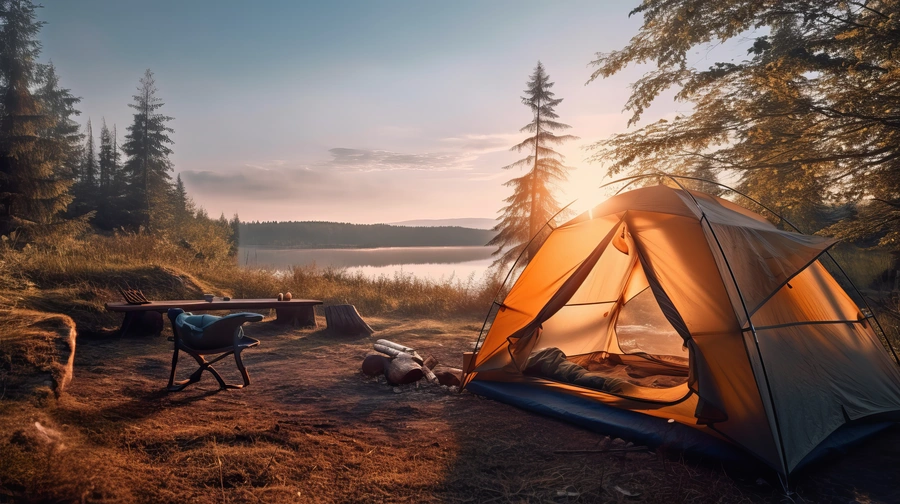The preservation of the natural world is facing mounting challenges due to human activity, making the ‘Leave No Trace’ philosophy more important than ever before. These seven principles not only provide guidelines for outdoor conduct but also promote a mindset that encourages us to be mindful and safeguard the untouched beauty of the wilderness areas we treasure. Whether you’re an experienced explorer or a casual weekend hiker, adopting and practicing these principles can greatly contribute to the health and longevity of our natural environment.
The Seven Principles of Leave No Trace
1. Plan Ahead and Prepare
Effective preparation is essential for reducing your impact. This entails doing thorough research on your destination, familiarising yourself with the local regulations and specific concerns, getting ready for extreme weather conditions or potential hazards, and ensuring you have the required skills and equipment. By planning ahead, you can steer clear of situations that could potentially harm the environment.
2. Travel and Camp on Durable Surfaces
Stick to designated paths and camping areas. The objective is to minimise the impact on soil erosion and harm to vegetation. In untouched areas, spread out to prevent the creation of new trails or campsites, and avoid places where impacts are just beginning to show.
3. Dispose of Waste Properly
The phrase “Pack it in, pack it out” is a straightforward but impactful. It emphasises the importance of taking all waste, including food leftovers and rubbish, with you when leaving an area. It’s important to remember that even biodegradable waste, such as fruit peels, can take a significant amount of time to decompose. When it comes to human waste, it’s essential to use designated facilities or bury it at a depth of 15-20 cm and a minimum distance of 70 meters away from water sources, trails, and campsites.
4. Leave What You Find
Resist the urge to take “souvenirs” from the wild. It’s important to leave rocks, plants, and historical artifacts untouched so that others can appreciate them in their natural state. Avoid introducing or transporting non-native species, which can happen inadvertently through seeds attached to your gear.
5. Minimise Campfire Impacts
Campfires have the potential to leave lasting effects on the environment. To minimise these effects, it’s advisable to opt for a lightweight stove for cooking purposes and a lantern for illumination. In the event that a fire is necessary, it’s important to utilise established fire rings, maintain a small fire, and only burn small portions of dead wood that are readily available on the ground. Always ensure the fire is completely extinguished before leaving.
6. Respect Wildlife
Observe wildlife from a distance and never feed them. Providing food to wildlife can have detrimental effects on their health, disrupt their natural behaviours, and make them vulnerable to predators and other risks. Protect both wildlife and your food by securely storing supplies and disposing of rubbish properly.
7. Be Considerate of Other Visitors
Respect fellow outdoor enthusiasts by maintaining a considerate attitude. Ensure that noise levels are kept to a minimum and refrain from monopolising communal areas. Show courtesy while walking on trails and allow the soothing sounds of nature to take centre stage.
Why Leave No Trace Matters
The Leave No Trace principles go beyond being simple guidelines; they symbolise a commitment to protecting the natural environment for future generations. As outdoor enthusiasts, we have the duty of being protectors of the wilderness, and our decisions can either contribute to its preservation or contribute to its decline.
Adopting the principles of Leave No Trace encompasses more than just safeguarding the environment; it also enriches our personal encounters in the great outdoors. Through cultivating a deep bond with nature, we develop an intense appreciation for its marvels and complexities. This connection, in turn, ignites our dedication to preserving and safeguarding natural areas, compelling us to champion their protection.
Putting Principles into Practice
Understanding Leave No Trace is the first step; the real challenge lies in incorporating these principles into every outdoor adventure. Begin with minor adjustments by evaluating your current habits and pinpointing areas that can be enhanced. It’s important to share your knowledge to others, especially when embarking on group trips, as collective actions have a greater impact.
The Leave No Trace principles provide a guide for responsible and sustainable enjoyment of the magnificent outdoors. By adopting these guidelines, we can guarantee the preservation of our natural landscapes, keeping them vibrant and untarnished for present and future explorers.

